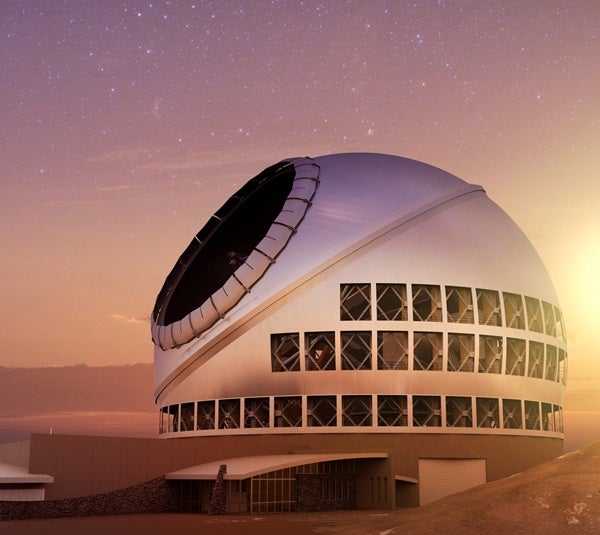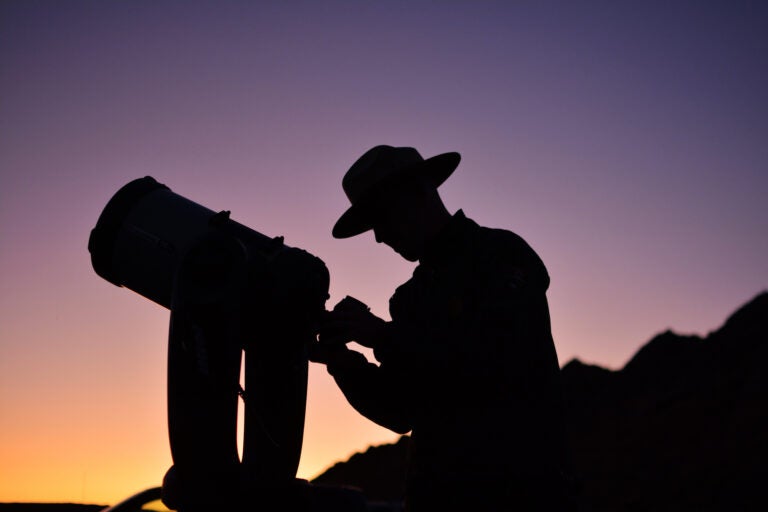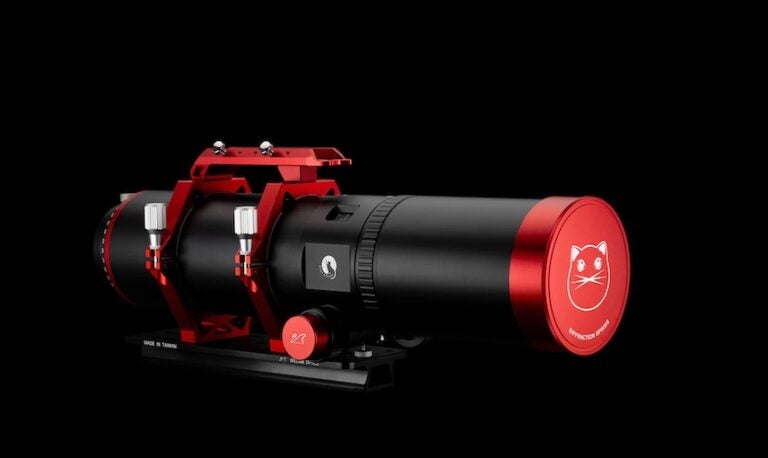Tour companies say that’s already hurt their bottom line. Such operations bring tens of thousands of visitors up the mountain every year for sunset and stargazing tours. Pat Wright, president and owner of Mauna Kea Summit Adventures, told Hawaii News Now that his company has been offering such tours of the summit for the last 32 years at a cost of $212 a head. But business has plummeted since the road closure.
“Since that time we have been generating about one-third of the revenue that we normally generate, but almost 100 percent of the same costs,” Wright told the local news station.
And they’re not the only night owls on the mountain. Each month around New Moon, amateur astronomers set up their personal telescopes outside the Mauna Kea Visitor Information Station. The visitor center runs its instruments until 10 p.m., but amateurs often will keep their own telescopes out until dawn. It’s website says the center is closed “indefinitely.”
Andrew Cooper, an amateur astronomer who lives in Hawaii and runs the blog “A Darker View,” says enthusiasts also set up their telescopes away from the visitor center.
Both user groups are now concerned this change will become permanent.
Today, Hawaii’s Department of Land and Natural Resources (DLNR) will consider a hunting rule change that would restrict nighttime access to the mountain in an effort apparently aimed at protestors. The new rules state:
(b) No person shall at any time bring in to the restricted area or possess or control in the restricted area any of the following items: backpack, tents, blankets, tarpaulins, or other obvious camping paraphernalia.
(c) No person shall enter or remain in the restricted area during the hours of 8:00 p.m. to 5:00 a.m., except to the extent the person is transiting through the restricted area in a motor vehicle on the Mauna Kea Observatory Access Road.
Astronomy enthusiasts and tour companies have rallied opposition to the rule changes because they say it could forever block them from accessing the summit at night.
“These rule changes are troubling,” Cooper wrote earlier this week. “If enforced as written they would prohibit amateur astronomers form using the [Visitor Information Services] area for observing through the night as we have done for decades.”
He says that a strict interpretation would even prohibit the summit’s official nighttime observing program run for tourists.
Nighttime photography is also big business on the mountain, and local photographers have raised the alarm. In a news article on Big Island Video News, a group of local night-sky photographers were quoted as calling the proposed changes “poorly written and lacking in necessary specifics” with “long-term and far reaching economic consequences.” The group said it too feared the new rule would effectively bring an end to photographing Mauna Kea’s starry skies.
Questions sent to the DLNR on Thursday were not immediately answered. Members of the public wishing to weigh in on the rule change can do so here: http://goo.gl/jYVzHn.
Eric Betz is an associate editor of Astronomy. He’s on Twitter: @ericbetz.










